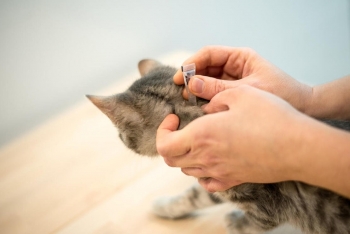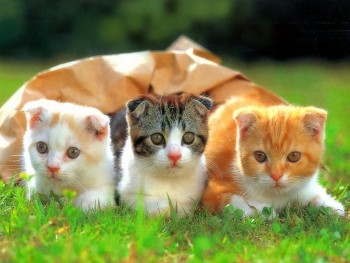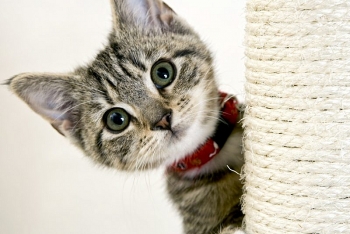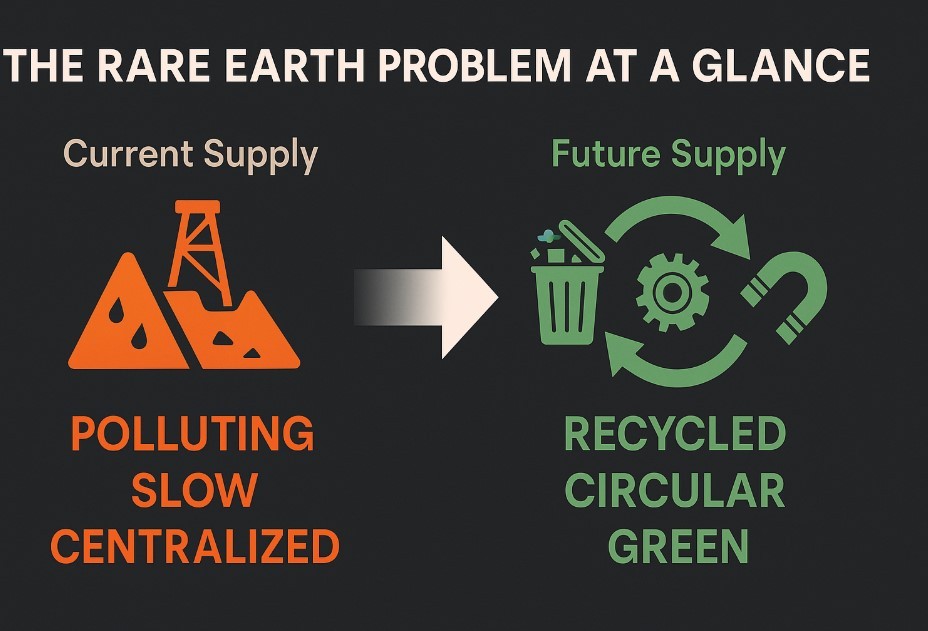Why Do Cats Purr? The Surprising Meanings Behind a Purring Cat
 International Cat Day: Dates, Meaning, History and Celebrations International Cat Day: Dates, Meaning, History and Celebrations |
 Do Cats Have Souls? How to Communicate with Beloved Pets Do Cats Have Souls? How to Communicate with Beloved Pets |
Purring is one of the most iconic sounds associated with cats. It’s gentle, soothing, and often considered a sign of contentment. But is that all there is to it?
Why do cats purr, really? In this article, we dive deep into the science, emotion, and mystery behind feline purring. From communication to healing, cats have far more reasons to purr than most people realize.
 |
| Why Do Cats Purr |
What Is Purring?
Purring is a rhythmic, low-frequency sound produced by cats through the rapid contraction and relaxation of muscles within the larynx (voice box). This sound typically ranges between 25 and 150 Hertz and is often associated with both inhaling and exhaling. Unlike meowing, which is a vocalization primarily aimed at humans, purring is more versatile and nuanced.
How Do Cats Purr?
Cats purr through a combination of neurological signals and muscular action. It all starts in the brain, where a repetitive neural oscillator sends consistent signals to the voice box, or larynx. These signals cause the laryngeal muscles to twitch rapidly—typically 25 to 30 times per second. This twitching controls the opening and closing of the glottis, the space between the vocal cords, which produces a sudden burst of air with each breath cycle.
What makes purring unique is that it happens during both inhalation and exhalation, creating a continuous sound. This is rare among mammals. The sound is low-frequency, almost like a hum, and can vary in volume, tone, and pattern based on the cat’s emotional or physical state. In essence, cats have evolved to create this sound using minimal energy, allowing them to purr even while they sleep or are in a state of rest.
Common Myths About Purring
Most people assume a cat purrs only when it’s happy. While this is often true, it’s only part of the story. Purring can also occur in moments of stress, pain, or fear. For example, a cat might purr during a visit to the vet, or even while giving birth. Clearly, the emotional spectrum behind this sound is far more complex than previously thought.
Why Do Cats Purr?
 |
| Why Do Cats Purr: Scientific Reasons |
1. Contentment and Relaxation
This is the most well-known reason. Cats often purr when they’re comfortable, like when being petted, sitting in a sunny spot, or curled up in a warm blanket. This type of purring is linked to a state of relaxation and trust.
2. Communication with Humans and Other Cats
Cats may purr to signal they are non-threatening. Kittens start purring just days after birth to communicate with their mothers. Mother cats also purr to guide their kittens. In adult cats, purring can be a tool for bonding with humans or signaling a desire for attention.
3. Self-Healing and Pain Relief
Scientific studies have shown that the frequencies of a cat’s purr can promote healing. The 25 to 150 Hz frequency range is known to aid in the healing of bones and tissues, reduce pain and swelling, and increase the production of certain growth factors. Some researchers believe that cats evolved this ability to recover faster from injuries or trauma.
4. Stress or Anxiety
Surprisingly, cats may purr when they’re scared or anxious. It’s believed to be a form of self-soothing, much like a human humming to calm themselves down. This might explain why a cat purrs at the vet or in a new, unfamiliar environment.
5. Seeking Attention or Food
Some cats use a special "solicitation purr" to get what they want. This sound blends a regular purr with a higher-pitched cry, mimicking the frequency of a human baby’s cry. It’s incredibly effective at catching human attention, especially around mealtime.
 How To Get Rid Of Fleas From Cats With The Natural Ways How To Get Rid Of Fleas From Cats With The Natural Ways |
The Science Behind Purring
While the behavioral reasons for purring are fascinating, the biological mechanism is just as interesting—and complex. Purring begins in the cat’s brain, where a repetitive neural oscillator sends messages to the laryngeal muscles (muscles surrounding the voice box). These muscles twitch at a consistent rate, which causes the vocal cords to separate. As the cat breathes in and out, this rapid separation and closing of the vocal cords creates the rhythmic sound we recognize as a purr.
What’s remarkable is that purring occurs during both inhalation and exhalation, setting it apart from most other vocalizations that happen only during exhalation. This dual-breath mechanism makes the purr a continuous, soothing hum.
Neurologically, the act of purring is believed to be both voluntary and instinctive. Some studies suggest cats can control their purring consciously in specific social situations (such as to solicit food), while other times it’s more of a reflexive behavior—particularly during recovery or sleep.
 |
| Meanings Behind a Purring Cat |
In addition, the frequency of a purr plays a critical role in its effects. Research has shown that the 25-150 Hz range produced during purring has therapeutic effects on both soft tissue and bone. Frequencies within this range are used in physical therapy for humans to stimulate healing and reduce inflammation. Cats may instinctively generate these frequencies to promote their own recovery.
Evolutionarily, this may explain why cats are so resilient. Despite their high activity levels, especially among wild species that rely on stealth and speed, cats suffer from relatively few bone and joint issues compared to other animals of similar size. Purring may be a built-in maintenance mechanism—a kind of natural self-repair.
Understanding the neuroscience, physiology, and evolutionary biology of purring not only deepens our appreciation for this feline behavior but also opens intriguing possibilities for biomedical applications in the future.
Health Benefits of Purring (For Cats and Humans)
Not only does purring help cats heal, but it might also benefit humans. Studies suggest that being around a purring cat can lower blood pressure, reduce stress, and even decrease the risk of heart attack. Cat owners often report a calming effect from the sound, which may contribute to the emotional bonds between humans and their feline companions.
When to Be Concerned
Although purring is generally a good sign, it’s important to consider context. If your cat is purring while showing signs of distress—such as hiding, panting, limping, or refusing to eat—it could be a sign of illness or injury. In such cases, purring may be a coping mechanism rather than a sign of comfort, and a visit to the vet is advised.
Conclusion
Cats purr for many reasons: joy, fear, healing, communication, and comfort. It’s a multi-layered behavior that reflects both their physical state and emotional world. Understanding the nuances behind this soothing sound can help cat owners respond better to their pets’ needs and strengthen their bond. So the next time your cat curls up and starts to purr, take a moment to appreciate the complexity behind that humble hum. It’s more than just cute—it’s a window into their world.
Frequently Asked Questions (FAQs)
Why does my cat purr when I pet them?
Your cat is likely feeling content, safe, and enjoying the interaction. Purring during petting is usually a sign of affection and trust.
Can cats control when they purr?
Yes, to some extent. While some purring is instinctive, cats also purr deliberately to communicate or soothe themselves.
Do all cats purr the same way?
No. Each cat has a unique purring sound, and the frequency or intensity can vary depending on the situation or the individual.
Should I worry if my cat is purring a lot?
Not necessarily, but watch for other signs. If excessive purring is paired with behavioral or physical symptoms, consult a vet.
Do big cats like lions purr?
Not in the same way. Most big cats roar instead of purr. However, some smaller wild cats, like cheetahs and bobcats, do purr.
 Dreams About Cats: Good or Bad Omen, According to Eastern Spirituality Dreams About Cats: Good or Bad Omen, According to Eastern Spirituality According to many Eastern interpretations, dreaming about cats is a bad omen. However, not all dreams about cats are bad omens, bringing bad luck. |
 Top 10 Best Descriptive Essays on Cats for Children Top 10 Best Descriptive Essays on Cats for Children Children or elementary school students often have difficulty describing the cat - one of the most popular, friendly family pets. |
 How to Train Your Cats Effectively? How to Train Your Cats Effectively? House training a cat is essential for happy co-habitation, and it's easier than you might think. Cats are clean animals, and they have a strong ... |























